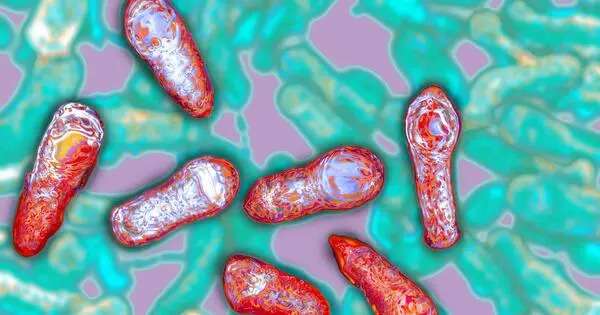Microbial toxins are those produced by microorganisms such as bacteria, fungi, protozoa, dinoflagellates, and viruses. These are compounds produced by microorganisms such as bacteria, fungus, algae, and protozoa that can be harmful to other creatures, including humans. Many microbial toxins cause infection and disease by directly harming host tissues and suppressing the immune system. Endotoxins are most frequently defined as lipopolysaccharides (LPS) or lipooligosaccharides (LOS) found in Gram-negative bacteria’s outer plasma membrane. These poisons are commonly classified according to their source and manner of action.
The botulinum toxin, produced predominantly by Clostridium botulinum but less frequently by other Clostridium species, is the world’s most poisonous chemical. However, microbial toxins have essential use in medicine and research.
Some common types of microbial toxins include:
(a) Bacterial Toxins:
- Exotoxins: These are proteins released by bacteria into their environment as they grow. Exotoxins can have various effects on host cells, such as damaging cell membranes, disrupting cellular functions, or causing cell death. Examples include tetanus toxin produced by Clostridium tetani and diphtheria toxin produced by Corynebacterium diphtheriae.
- Endotoxins: These are lipopolysaccharides (LPS) found in the outer membrane of certain Gram-negative bacteria. Endotoxins are released when the bacterial cells die and their cell walls break down. They can trigger inflammatory responses in the host, leading to symptoms such as fever, shock, and organ failure. Lipid A is a component of endotoxins that is particularly responsible for their toxic effects.
(b) Fungal Toxins: Fungi can produce various toxins, such as mycotoxins, which are secondary metabolites produced by molds. Mycotoxins can contaminate food and feed crops, leading to health issues in humans and animals. Examples include aflatoxins produced by Aspergillus species and ochratoxin produced by Penicillium and Aspergillus species.
(c) Algal Toxins: Certain species of algae, such as dinoflagellates and cyanobacteria, can produce toxins known as phycotoxins or cyanotoxins, respectively. These toxins can accumulate in seafood and freshwater bodies, posing risks to human health if consumed. Examples include saxitoxin produced by dinoflagellates and microcystins produced by cyanobacteria.
(d) Protozoan Toxins: Some protozoa can produce toxins that contribute to the pathogenicity of the organism. For example, the protozoan parasite Plasmodium, which causes malaria, produces toxins that contribute to the destruction of red blood cells and the symptoms of the disease.
Microbial toxins have a variety of impacts on the host, including tissue destruction, inflammation, immunological suppression, neurological consequences, and gastrointestinal complaints. Understanding the mechanisms of action and effects of these toxins is critical for establishing preventive and treatment methods for infections and toxin-related disorders.
To better isolate and comprehend bacterial toxins, novel detection technologies are now being developed. Toxin research has potential applications in reducing microbial pathogenicity, developing innovative anticancer treatments and other pharmaceuticals, and using toxins as tools in neurobiology and cellular biology.
















